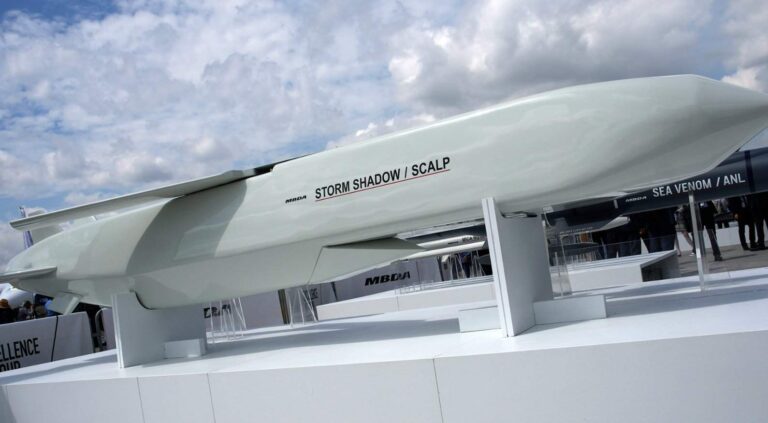(By Khalid Masood)
Modern warfare is witnessing a historic shift. Bullets, missiles, and bombs are no longer the only means to dominate a battlefield. A new class of weapon has arrived—one that moves at the speed of light and strikes with surgical precision: Directed Energy Weapons (DEWs). By 2025, lasers and microwave systems are no longer experimental; they are actively being deployed as anti-drone systems, missile interceptors, and silent defenders of strategic sites.
This article ranks the Top 10 Directed Energy and Laser Weapons in the World (2025 Edition) based on power output, operational capability, range, deployment platform, real-world use, and strategic value. Nations like the United States, China, Israel, Russia, and members of the NATO alliance are in a fierce race to dominate this new frontier. For defence analysts, military enthusiasts, and strategic planners, understanding these weapons is critical for predicting the future of combat.
What Are Directed Energy Weapons (DEWs)?
Directed Energy Weapons are military systems that emit focused energy in the form of lasers, electromagnetic waves, or even charged particles, to damage or destroy enemy targets. Unlike traditional kinetic weapons, DEWs don’t rely on explosive projectiles. Instead, they disable or destroy by heating, burning, or scrambling electronic circuits.
The three primary types of DEWs are:
- High-Energy Lasers (HEL): Use focused light to burn or melt targets.
- High-Power Microwaves (HPM): Use electromagnetic radiation to disable electronics.
- Particle Beam Weapons: Still mostly experimental, using accelerated particles to ionize matter.
Advantages:
- Hit targets at the speed of light
- Low cost per shot (just electricity)
- Silent, stealthy, and precise
- Ideal for anti-drone and anti-missile defence
Challenges:
- Require massive power supply
- Heat management and cooling issues
- Reduced performance in rain, fog, dust, or smoke
- Limited range for very high-energy needs
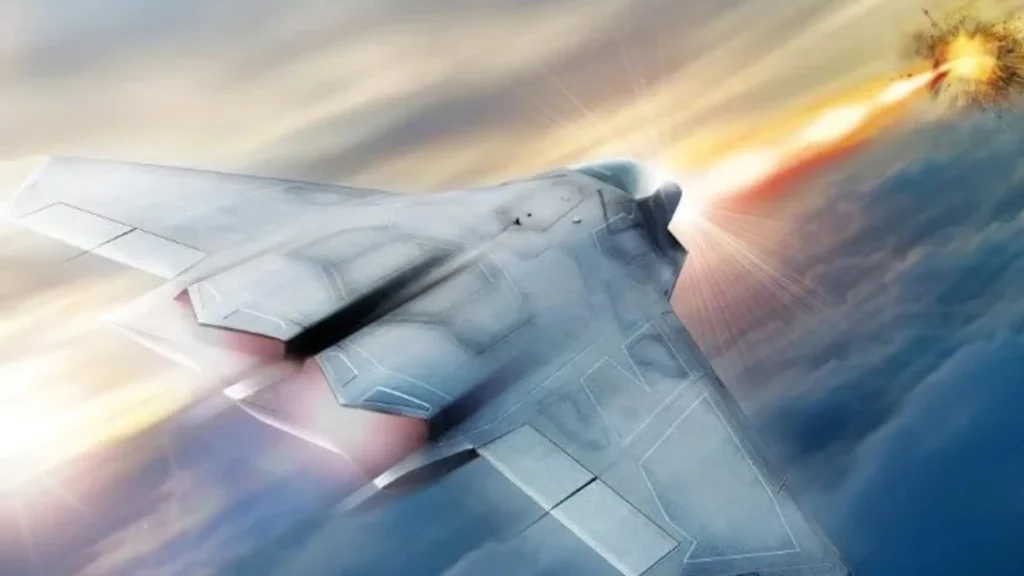
Criteria for Ranking
To create a fair and credible list of the Top 10 Directed Energy Weapons of 2025, the following criteria were used:
- Power level (kW or MW class)
- Effective operational range
- Real-world deployment vs prototype
- Platform versatility (land / sea / air)
- Successful test record or combat use
- Strategic value to national defence
🔟 Top Directed Energy / Laser Weapons of 2025
1. HELIOS – US Navy High Energy Laser
- Country: United States
- Platform: Arleigh Burke destroyers
- Power: 60–100 kW
The HELIOS (High Energy Laser with Integrated Optical-Dazzler and Surveillance) system is a game changer for naval warfare. Installed on U.S. Navy destroyers, HELIOS is designed to track, dazzle, and destroy drones, small boats, and even incoming missiles. The system integrates a surveillance optic and dazzler to blind enemy sensors and provide a non-lethal option. It has been tested aboard ships and is now entering operational deployment. With scalable power between 60 and 100 kW, it can fire continuously as long as the ship’s power supply holds. HELIOS has already proven capable of disabling UAVs in live-fire exercises. Key strengths include proven performance, precision engagement, and integration with existing ship combat systems. Its main limitation is that it currently cannot engage large ballistic missiles, but future upgrades are planned. HELIOS represents the most mature naval laser weapon in the world to date.
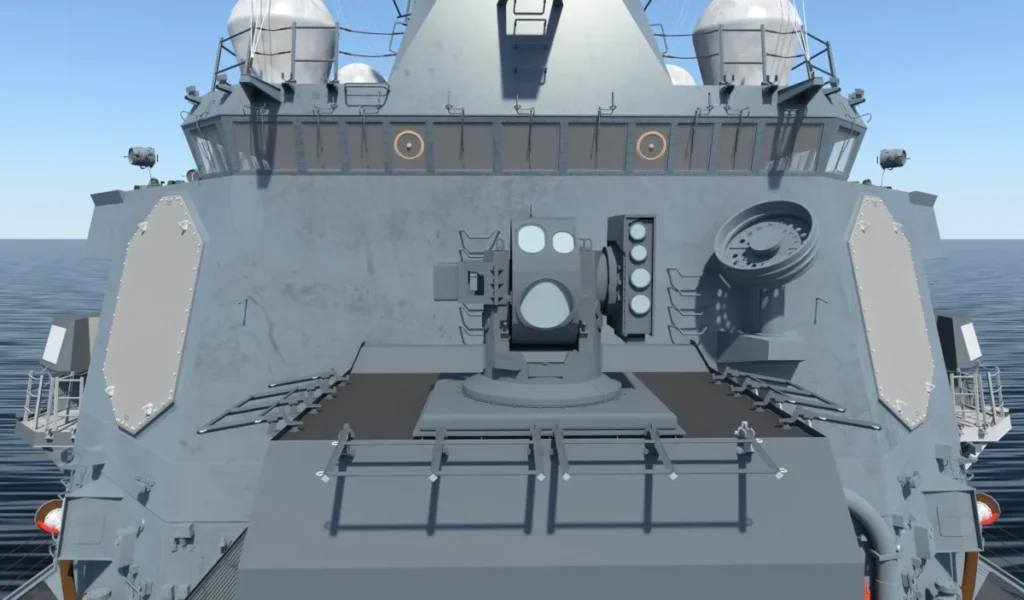
2. Iron Beam – Israel’s Laser Air Defence Shield
- Country: Israel
- Platform: Ground-based / fixed or mobile
- Power: 100 kW-class
Iron Beam, developed by Rafael Advanced Defence Systems, is a high-energy laser air defence system designed to intercept rockets, artillery, and mortar shells. Unlike Israel’s Iron Dome which uses interceptor missiles, Iron Beam burns targets mid-air. It was successfully tested in 2023 and 2024 and is currently being integrated into Israel’s multi-layered air defence network. With a reported power output of around 100 kW, Iron Beam provides cheap, renewable defence — each shot costs only a few dollars in electricity, compared to tens of thousands for a missile. It has already intercepted live targets in field tests. Limitations include reduced effectiveness in poor weather and short-range limitations compared to Iron Dome missiles. Still, Iron Beam is the first operational laser interception system in the world and is already deployed to defend Israeli cities and border zones.
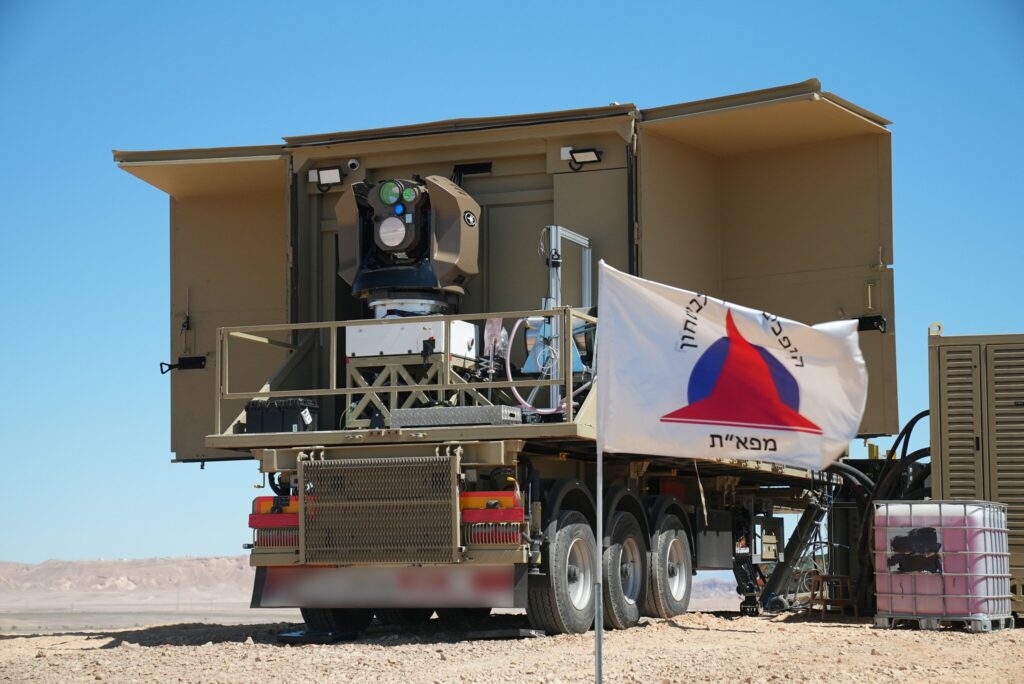
3. China’s GW Laser System
- Country: China
- Platform: Ship-based and ground-based (PLA)
- Power: 50–300 kW (estimated)
China is rapidly advancing its directed energy program through multiple classified projects. One of the most notable is the so-called “GW Laser System” installed on PLA Navy destroyers and coastal installations. While official data is limited, Chinese state media claims a range of 50kW to possibly 300kW in some variants. These lasers are intended to neutralize enemy drones, disable onboard optics, or act as anti-ship missile defence. Analysts believe China is integrating lasers on Type 055 destroyers and developing truck-based laser vehicles similar to the U.S. DE M-SHORAD. Although real combat use is not yet confirmed, evidence suggests the system is far past prototype stage. The main weakness is lack of transparency and proof. Still, China’s GW Laser program is considered one of the top three in the world.
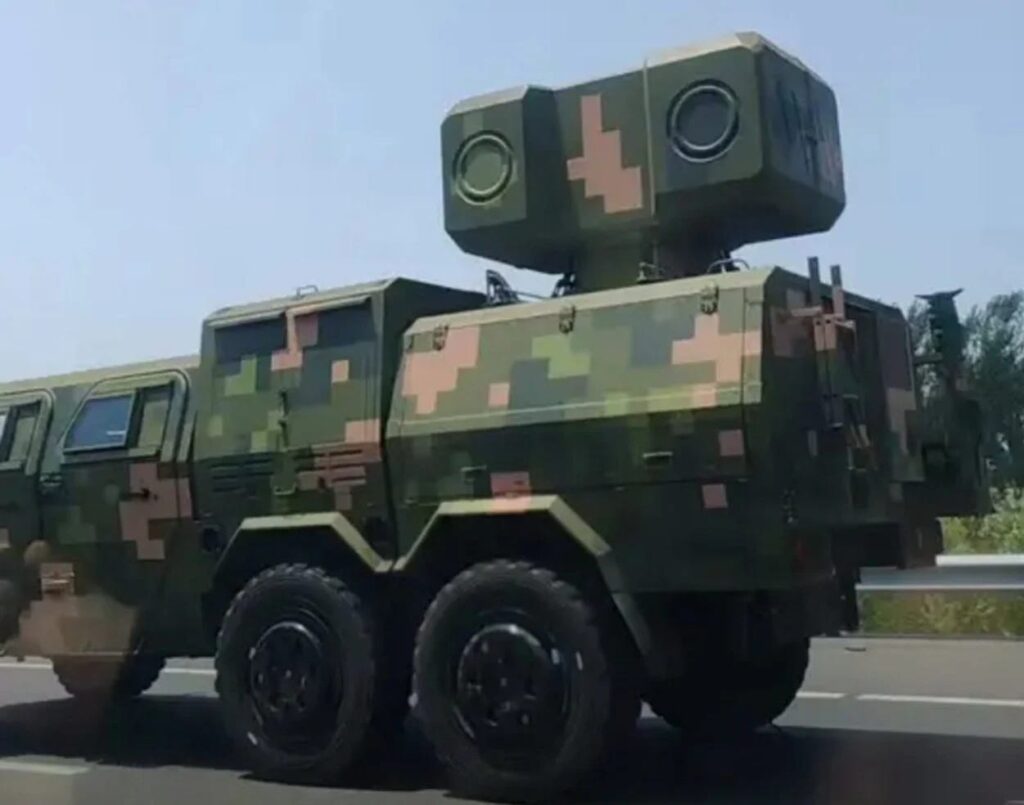
4. US Army’s DE M-SHORAD (Stryker Laser)
- Country: United States
- Platform: Stryker armored vehicle
- Power: 50 kW
The Directed Energy Maneuver Short-Range Air Defence (DE M-SHORAD) system is a 50-kW laser mounted on a Stryker vehicle. It has been deployed with U.S. Army units in Europe to counter drone threats and short-range artillery. The system can destroy drones, disable optics, and intercept small projectiles in real battlefield conditions. It is fully mobile, making it ideal for battlefield air defence. DE M-SHORAD successfully shot down multiple drones in recent tests and is part of the U.S. Army’s new layered defence strategy. Its strengths include mobility and rapid response. The main drawback is power output, which, at 50 kW, may not be enough to destroy heavier projectiles or cruise missiles. Nevertheless, as a front-line battlefield laser, it is already an operational reality in 2025.
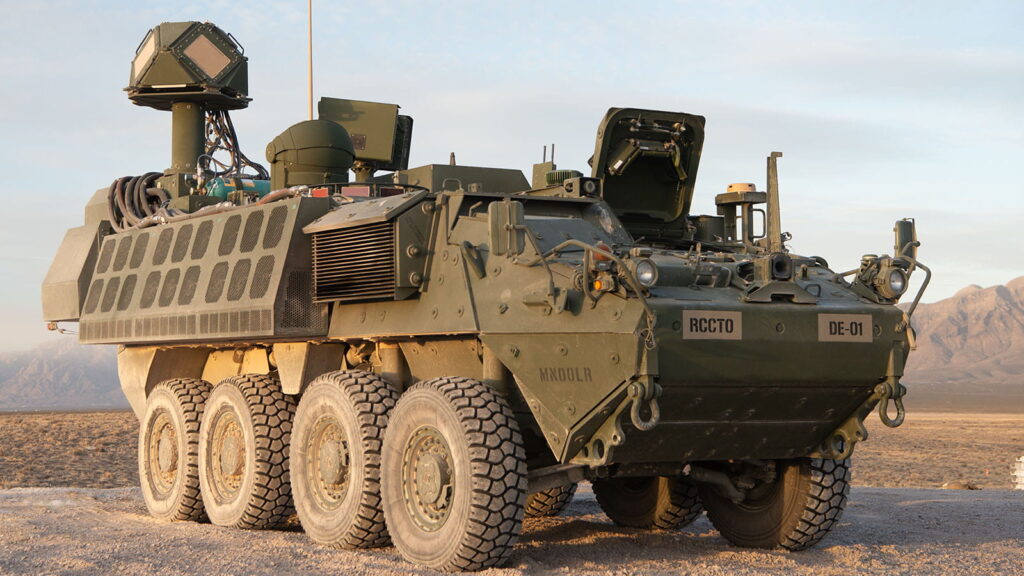
5. Russia’s Peresvet Combat Laser
- Country: Russia
- Platform: Ground-based / strategic protection
- Power: Classified (estimated 100–300 kW)
The Peresvet is perhaps Russia’s most secretive laser weapon. First revealed publicly in 2018, it is believed to be deployed with Russia’s Strategic Rocket Forces to protect ICBM launch sites and mobile units. Russian officials claim it can dazzle or disable reconnaissance satellites and even intercept some airborne targets. Some analysts regard these claims as exaggerated, yet the system is operational and deployed since 2020. Peresvet’s true power level is unknown, estimated between 100–300 kW. Its greatest strength is its psychological deterrent value and potential to blind satellites. Major weaknesses include unproven reliability under combat conditions, large power requirements, and logistical challenges. Nonetheless, Peresvet is the most advanced strategic laser weapon Russia currently fields.
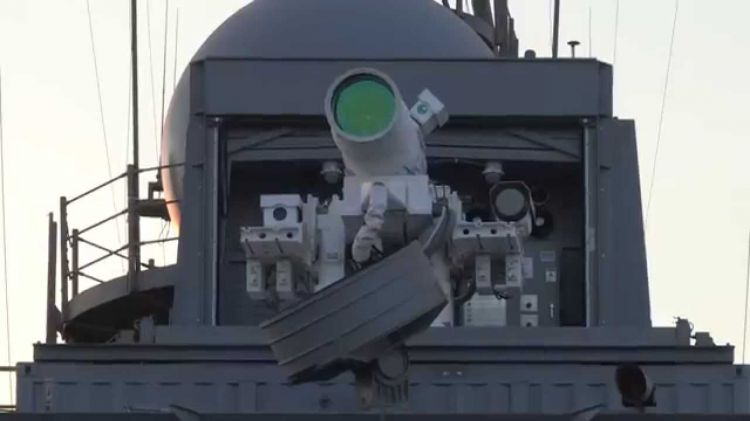
6. Germany’s Laser Weapon Demonstrator (Rheinmetall)
- Country: Germany
- Platform: Naval ships and land vehicles
- Power: 20–60 kW (scalable to 100 kW in future)
Rheinmetall’s Laser Weapon Demonstrator (LWD) is Europe’s most advanced directed-energy system under development. In 2022–2024, the German Navy tested it onboard the Sachsen-class frigate to target drones and small threats at sea. The land version is mounted on Boxer armored vehicles, focusing on air defence and convoy protection. Though currently in the 20-60 kW class, Rheinmetall plans to scale it beyond 100 kW. These systems have already proven capable of destroying UAVs in testing. Germany’s advantage is precision engineering and seamless integration with NATO standards. The limitation remains power supply, as naval systems need massive energy generation to sustain continuous fire. Nonetheless, the LWD positions Germany as a major laser power in Europe.
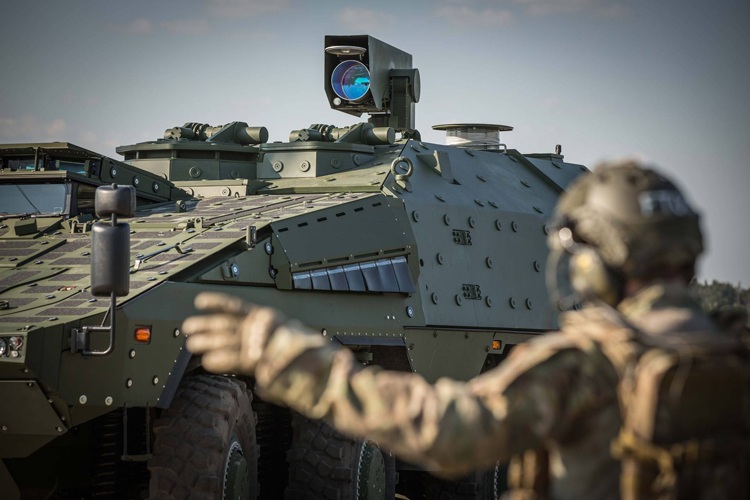
7. Lockheed ATHENA / IFPC-HEL
- Country: United States
- Platform: Ground-based (mobile)
- Power: 100 kW+
The ATHENA (Advanced Test High Energy Asset) laser and its derivative IFPC-HEL (Indirect Fire Protection Capability – High Energy Laser) are Lockheed Martin projects aimed at 100 kW-class anti-missile systems. They are designed to intercept drones, artillery shells, and even some cruise missiles. ATHENA has shot down five drones in a single test, proving both accuracy and rapid reuse. IFPC-HEL is designed for U.S. Army base defence and complements missile systems like Patriot and THAAD. The greatest strength is its power and modular design. Weaknesses include logistics, as heavy power generators and cooling systems are required. However, Lockheed is currently one of the global leaders in solid-state laser weapons.
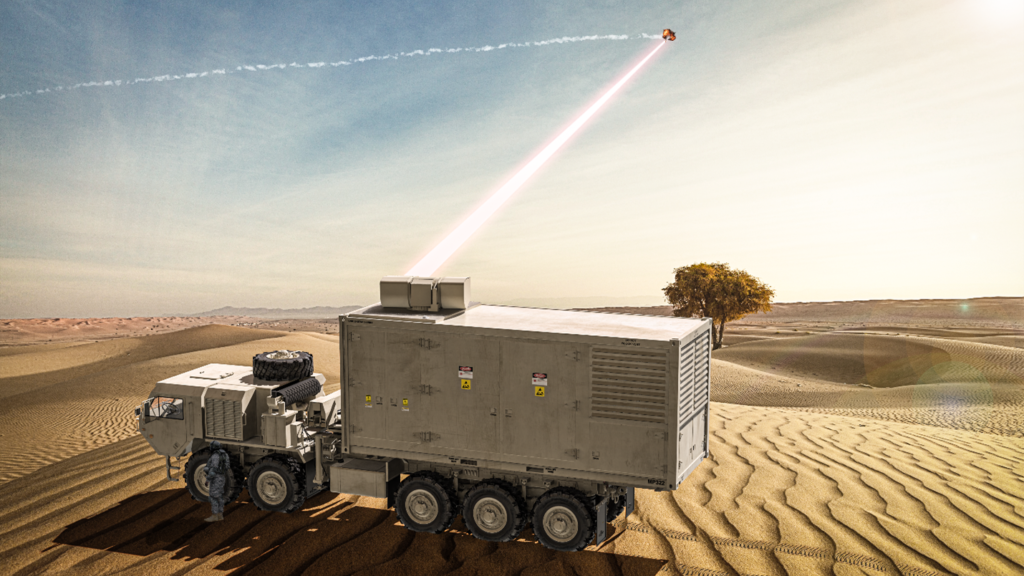
8. U.S. Air Force SHiELD Program
- Country: United States
- Platform: Airborne (fighter jets, cargo aircraft)
- Power: 50–100 kW (technology demonstrator)
SHiELD (Self-Protect High Energy Laser Demonstrator) is an ambitious U.S. Air Force project aiming to mount laser pods on fighter jets or large aircraft. The goal is to shoot down incoming air-to-air or surface-to-air missiles in flight. This system has faced technical challenges due to vibration, airflow, and cooling at high speeds, but recent ground tests have been successful. If fully operational, SHiELD could protect aircraft from enemy missiles without firing a single bullet. Its limitation is technology maturity — still in testing phase. But the concept is revolutionary and could change aerial combat forever.
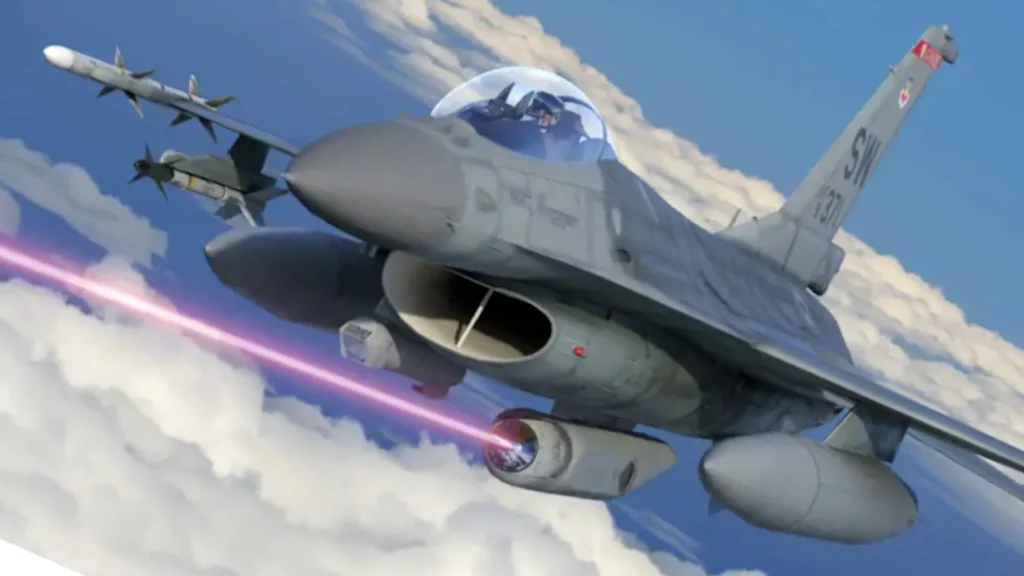
9. India’s DRDO DEW Program
- Country: India
- Platform: Truck-based and ground systems
- Power: 20 kW (current), aiming for 100 kW
India’s Defence Research and Development Organisation (DRDO) has been working on indigenous laser weapons for years. In 2024, India tested a 20 kW laser to shoot down drones at close range. The next goal is a 100 kW anti-UAV and anti-missile laser defence system for border and base protection. While still in early stages compared to U.S. and Israel, India’s progress is significant for regional security. Strengths include cost-effectiveness and domestic production. Weaknesses lie in scalability and power generation, but by 2025, India is clearly rising as a player in the global laser race.
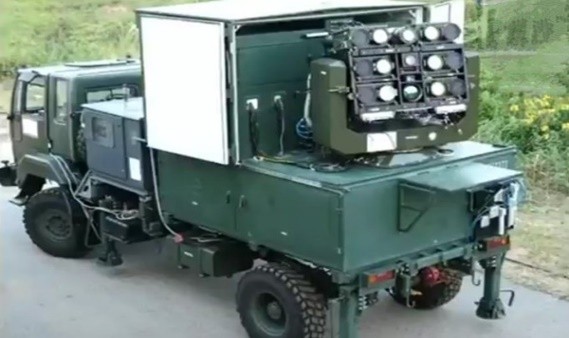
10. UK DragonFire Laser
- Country: United Kingdom
- Platform: Naval and land-based
- Power: 50 kW (expected to scale higher)
DragonFire is a British directed-energy program jointly developed by MBDA, Leonardo, and the U.K. Defence Science and Technology Laboratory (DSTL). It is a precision laser weapon capable of engaging drones, small boats, and missiles. In trials, DragonFire successfully tracked and destroyed targets, paving the way for integration on Royal Navy ships and British Army vehicles. Its strength is extremely accurate beam steering and high optical quality. Challenges include adequate power supply aboard naval platforms, but the U.K. aims to deploy DragonFire operationally within a few years. The system enhances Britain’s role in NATO’s laser future.
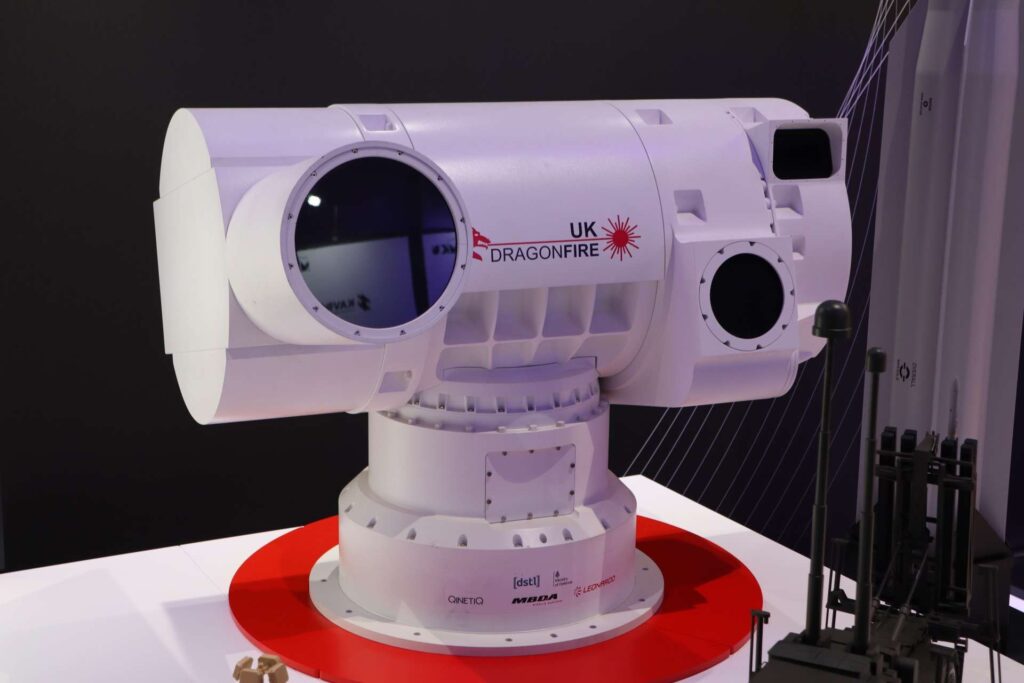
🔬 Technologies Behind These Laser Weapons
Most modern military lasers are solid-state fiber lasers or combined beam fiber arrays. These are more efficient than older chemical lasers and easier to deploy. A typical system includes:
- Laser source (fiber amplifier modules)
- Beam director turret
- Thermal cooling system
- Radar/sensors to track target
Cooling remains a core problem — lasers generate enormous heat when firing. Power is another challenge, especially on mobile units like vehicles or drones. Experts are now exploring Li-ion batteries, capacitors, and even nuclear small reactors for ship-based lasers.
The next breakthrough will be 1 MW-class lasers, which could shoot down ballistic missiles or hypersonic weapons.
🌍 Global Race & Geopolitical Impact
Directed Energy Weapons are transforming global military balance. The United States remains the leader in operational capability, but China is catching up rapidly and investing heavily in naval laser systems. Israel has field-tested its Iron Beam and is exporting the technology. Russia’s Peresvet poses strategic concerns due to its anti-satellite potential, although its actual performance is questionable.
European countries (Germany, U.K., France) are working on defensive lasers for NATO fleets. India and South Korea are emerging players in Asia. The U.S. sees DEWs as a pillar to defend against China’s hypersonic missiles, and future arms control treaties may need to address space-based lasers.
⚠️ Limitations & Ethical Concerns
While exciting, laser weapons still have limitations:
- Weather: fog, rain, smoke weaken laser beams
- Power: need large generators or dedicated energy storage
- Ethics: blinding laser weapons are banned under the Geneva Convention
- Fragility: optical systems can be damaged easily in battlefield environments
There is also the moral debate over disabling satellites or critical infrastructure from space.
🔮 Future Outlook: Beyond 2025
By 2030, the following developments are expected:
- Mobile 1 MW lasers capable of shooting down ballistic missiles
- Airborne lasers mounted on fighter jets
- Laser-powered point defence systems on all major warships
- Integration with AI for auto-target prioritization
- Space-based directed energy weapons
Countries will increasingly invest in anti-satellite lasers, strategic deterrence, and drone swarm neutralizers. Laser defences may become as common as radars today.
✅ Conclusion
The year 2025 marks a turning point in military history — the era when directed energy weapons left laboratories and entered real battlegrounds. From Israel’s Iron Beam destroying rockets for a few dollars per shot to the U.S. Navy’s HELIOS burning drones mid-air, laser weapons are becoming operational.
These top 10 systems show the global diversity in technological approach. The U.S. leads in deployment, Israel leads in combat interception, China leads in secrecy, Russia uses lasers strategically, and Europe invests in precision defence. India and emerging nations are catching up fast.
Although limited by power, weather, and ethics, laser weapons are here to stay. They promise a future where wars are fought at the speed of light — silent, precise, and unstoppable.
Directed energy is not just the future. In 2025, it has already begun.


